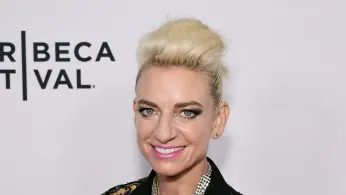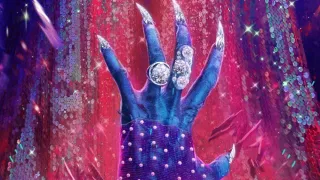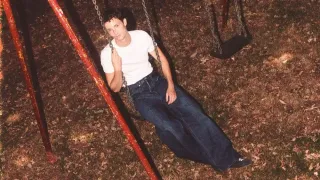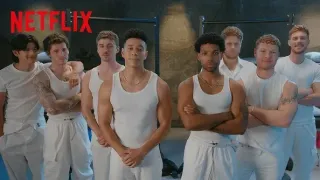
4 hours ago
Tina Romero Reanimates the Zombie Genre with a Queer Stamp in "Queens of the Dead"
READ TIME: 4 MIN.
Tina Romero, the daughter of George A. Romero—the filmmaker who defined the modern zombie film—has stepped into the spotlight with"Queens of the Dead," a film that both pays homage to her father’s genre-defining work and boldly breaks new ground. In an interview with Out Magazine, Romero reflects on what it means to inherit and reinvent such a storied legacy. “It’s a lot of pressure, honestly,” Romero shares. “But I wanted to make something that was both a love letter to my dad’s films and an honest reflection of the communities and nightlife that shaped me. ‘Queens of the Dead’ is my queer stamp on the zombie legacy” .
From the outset, Romero envisioned a film that was as colorful and vibrant as the drag and club scenes she knows so well. “It was important to me from the beginning to make it colorful and make it vibrant and speak to the magic of drag,” Romero explains. “I came of age as a DJ in the queer club space, and it's such a magical, creative space without any budget. Often you're not making any money, but you're doing it for the creative zest” .
Set against the backdrop of a Brooklyn warehouse party,"Queens of the Dead" sees an eclectic group of drag queens, club kids, and frenemies fighting to survive both a zombie outbreak and the petty dramas that threaten to tear them apart. “A zombie apocalypse breaks out in Brooklyn on the night of a giant warehouse party, where an eclectic group of drag queens, club kids, and frenemies must put aside their drama and use their unique skills to fight against the brain-thirsty, scrolling undead,” the film’s synopsis reads .
Romero and co-writer Erin Judge spent years developing the film, much of it during the COVID-19 pandemic. Romero notes, “We wanted to make something lighthearted from the beginning, and the bulk of our writing happened during COVID. Erin and I were feeling like, ‘shit is grim, and let's give the people something fun.’ That still remains true in 2025” .
But beneath the film’s glitter and gore lies a sharp social commentary, a hallmark of the Romero family tradition. “The queer community is very strong, and there’s a lot of solidarity, but it’s not without drama and not without different factions of queer people not necessarily seeing eye to eye,” Romero tells Out. “There’s generational tension, class tension, and the opioid epidemic—these are things our community has dealt with. We wanted to show that the real horror is often among the living, not the dead” .
Romero does not shy away from her father’s influence. “As the daughter of the man who made the zombie genre what it is, I celebrate George Romero's'Dead' legacy in multiple instances and Easter eggs while firmly affixing my own stamp on ‘Queens,’” she says . “At the core of my dad's zombies – what makes them special is they are slow, they're sympathetic, and they're silly. All of those things, when you put the queer on top of that, you get camp as a result.”
The film leans into camp, not just as an aesthetic but as a subversive tool. “It had to be camp on a certain level,” Romero explains. “Zombies are kind of camp. It's such a butch genre, and I was interested in pushing against the butchness of it all. I wanted to find the fabulousness, I wanted to find the fun” .
Musically, the film pays direct tribute to the past. “From the get-go, we wanted to homage ‘The Dead Suite’ by John Harrison,” Romero reveals. “We actually talked to John Harrison, and we got his blessing to run with it. My favorite Easter egg is the musical one, and I love how Blitz Berlin remixed it. They even incorporate it into the Kesha remix at the end. There's a little bit of a ‘Dead Suite’ remix going on in that finale music. They're so good, they're so cool, and I'm obsessed with them” .
"Queens of the Dead" boasts a diverse cast including Katy M. O’Brian, Dominique Jackson, Tomas Matos, and Margaret Cho, with a story that centers queer and trans characters as protagonists and survivors. “At the end of the day, when you're forced to understand what really matters, nothing about a trans person changes how you live your day-to-day life. It just doesn't. Are you really saying if your life depended on surviving with someone who was different than you, you wouldn't do it?” says O’Brian, reflecting on the film’s central message .
Romero is clear about her intentions with representation. “I wanted to see queer people and drag queens as the heroes—fighting, surviving, being messy, being fabulous, and being real. Horror has often excluded us or made us the joke. This time, we’re the main event,” she says .
For Romero, the film is as much about community as it is about survival. “There’s the infighting that happens in the community, the generational and class tensions, but there’s also resilience, joy, and the capacity to come together when it matters,” she tells Daily Dead .
Timed for a Halloween release, “Queens of the Dead” arrives at a moment when queer communities are both under attack and more visible than ever. The film’s blend of horror, humor, and heart offers both escapism and affirmation for LGBTQ+ audiences. “Get ready for one hell of a queer Halloween!” Out Magazine proclaims .
Romero hopes the film will inspire other queer creators to take up space in genres that have too long excluded them. “This is just the beginning,” she says. “There’s room for all of us at the party—and the party’s not stopping anytime soon” .






